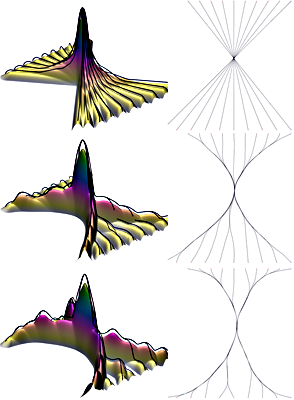Kernel Density Estimation-based Edge Bundling
Visual Studio C# code instance
(GPU version)
Visual Studio C# code instance (CPU version), thanks to Antoine LHUILLIER
|
Edge bundling is a
recent, increasingly promising, technique which generates graph layouts of
limited clutter. Bundled layouts can be used to get insight into the
coarse-scale structure of networks, geographical maps, and software
systems. For general graphs, many bundling methods have been proposed in the last few years. However, the following requirements are still challenging
|
Kernel density estimation
We present here a method
that complies well with the above requirements. The principle of our method
is simple. Given an initial graph drawing
- convert the drawing to a density map using kernel density estimation (KDE)
- compute the normalized density map gradient
- move each edge in the gradient direction
- smooth edges using Laplacian filtering (optionally)
- repeat from step 1 with decreasing kernel sizes
Intuitively, the above is equivalent to sharpening the edges' density map. This in turn pulls edges towards the center of their local point spatial distribution, which achieves the bundling.
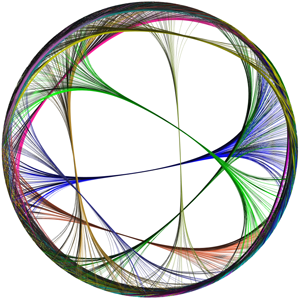
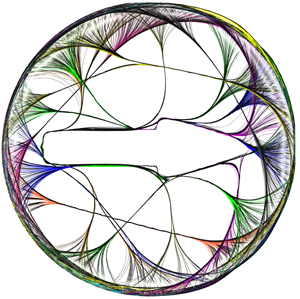

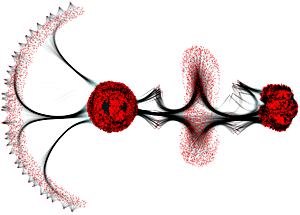
Net-50 graph (464440 edges). Dataset provided by MINGLE
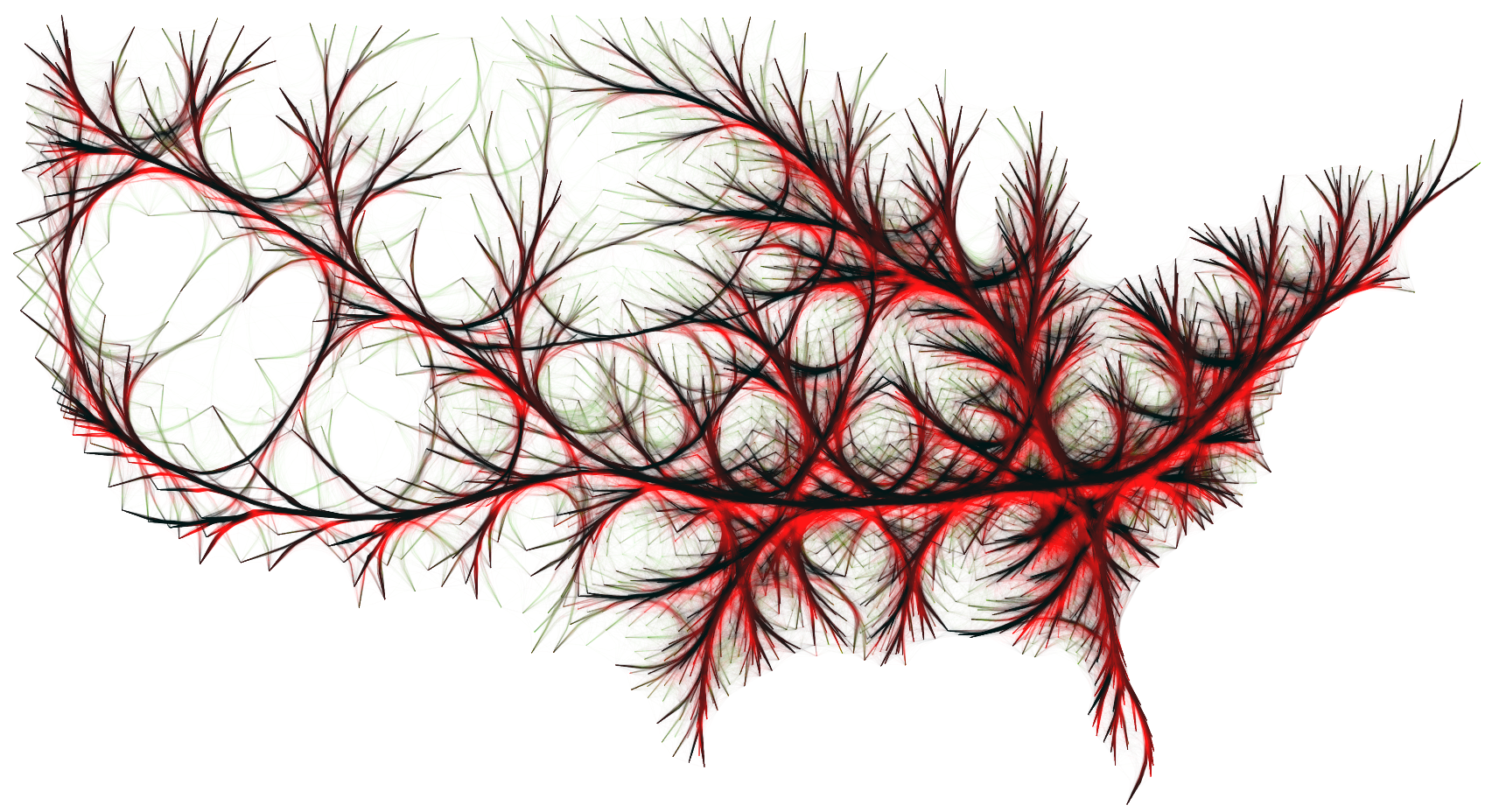
US migration dataset (United States Census Bureau)
Implementation
KDEEB is simple to
implement and can be easily accelerated using texture splatting for the computation
of density maps and their gradients. Our entire implementation is done in C#
using OpenGL 1.1.
Acknowledgements
This research was done in
collaboration with Ozan Ersoy
and Alexandru Telea from university of Groningen, the Netherlands.
